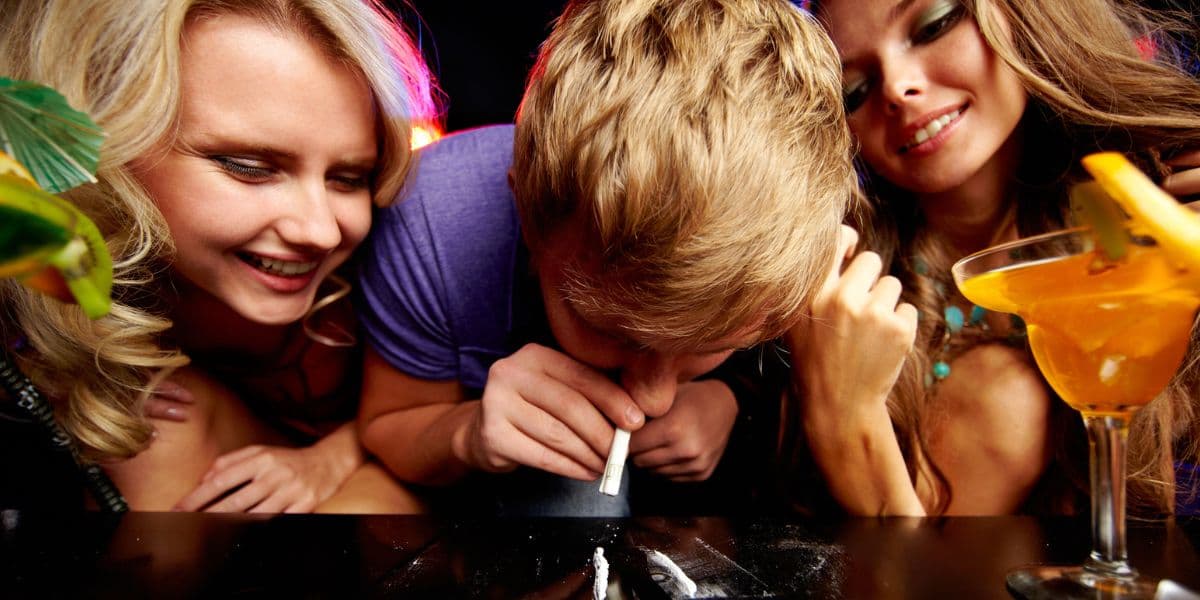Understanding Polysubstance Use


In the United States, it is common for people to experiment with drugs and alcohol as part of their social activities. This might include taking a few bumps of cocaine after drinking, combining prescription medications with alcohol, smoking a joint to unwind, or using recreational drugs at a social event one night and taking Xanax to relax the following day.
However, despite not recognizing their actions, this behavior constitutes polysubstance use.
Polysubstance use is a type of drug addiction characterized by a pattern of behavior rather than a specific substance. This addiction affects millions of people annually. It affects millions of people every year.
Mixing different substances, whether illegal or prescribed, increases the risk of addiction, health problems, and accidental overdose.
What Is Polysubstance Use?
People define polysubstance abuse as consuming multiple substances either simultaneously or consecutively.
Polysubstance use encompasses not only illicit drugs but also prescription medications and alcohol.
Many people abuse drugs to feel high, not because they are addicted to a specific combination of substances. This behavior is common among individuals seeking a euphoric sensation. They may use a variety of drugs simultaneously to achieve the desired effect
This behavior is motivated by the desire for a heightened state of consciousness. Although some people may have preferred mixtures, it often involves using whatever substances are readily available.
A polysubstance abuser might be someone who does a bump of cocaine after a few drinks and then takes a sleeping pill upon returning home. Similarly, an individual who concurrently uses prescription painkillers and an anti-anxiety medication also qualifies as a polysubstance abuser.
A college student misuses multiple substances by drinking too much alcohol one night. The student then takes MDMA the next night and smokes marijuana the following day.
A university student who engages in binge drinking one night consumes MDMA the following evening, and smokes cannabis the subsequent day is also participating in polysubstance use.
Dependence on multiple substances is usually more of a situational and behavioral addiction than a physical one.

Polysubstance Use Disorder
The DSM IV is a trusted resource for identifying health issues. Polysubstance abuse is defined as using three or more substances at the same time or close together. This is done without favoring any specific drug.
The updated DSM-V has eliminated polysubstance use disorder from its roster of substance use disorders.
Researchers believed that the criteria for diagnosing polysubstance use disorder were ambiguous and lacked clarity in providing effective treatment recommendations.
The CDC, Centers for Disease Control and Prevention categorizes polydrug use into two types:
- Intentional polydrug use happens when someone takes one substance to make another drug effect’s stronger or to feel the combined effects of several drugs.
- Unintentional polydrug use happens when a person unknowingly combines drugs or takes drugs contaminated with other substances.
There remains a difference between being addicted to multiple specific drugs, such as someone with both an opiate use disorder and an alcohol use disorder, and someone who indiscriminately mixes any available drugs.
Some of the most frequently combined substances reported by polydrug users include:
- Liquor, coke, and weed
- Liquor combined with opioids or benzodiazepines
- Liquor and different prescribed drugs
- Opioids and coke
- Several types of opioids
- Emerging mind-altering substances (NPS) like kratom, DMT, MDMA, etc., coupled with liquor and stimulants
Treatment for polysubstance abuse typically necessitates detailed and comprehensive plans to tackle both the physical and mental aspects of abusing multiple substances.
Effects of Polysubstance Use
Mixing alcohol with different drugs can lead to negative reactions. These reactions can occur immediately or in the long term. Additionally, mixing drugs with alcohol can also result in withdrawal symptoms. It also raises the risk of overdosing and experiencing medical crises.
Mixing alcohol with drugs or different types of drugs can cause various side effects. The specific combinations of substances used will determine the side effects experienced.
Some common side effects of using multiple substances at once include:
- Suppression of breathing
- Alterations and irregularities in heart rhythm
- Hazardous fluctuations in blood pressure
- Heightened resistance to various substances
- Nausea and throwing up
- Perspiration
- Muscle contractions and jerks
- Diminished mental capacity
- Loss of consciousness
- Elevated likelihood of dependence on multiple drugs
- Damage to internal organs
- Reckless sexual conduct
- Violent behavior
- Damage to nerves
- Exacerbation of pre-existing mental disorders
- Alcohol toxicity
- Convulsions
- Asphyxiation
- Drug overdose
- Unconscious state
- Death
When different substances mix in the body, they can cause side effects that stack up or create new ones. Combining alcohol and opioids can make the brain and nervous system work slower. This can lead to breathing issues and, in severe cases, coma or death.
Suppose you mix drugs with opposing effects, such as cocaine and opioids. If that happens, you may not feel the effects as much. This could lead to taking more medication. Taking more medication increases the chance of accidentally overdosing.
When someone mixes cocaine with alcohol, it creates a substance called cocaethylene in the liver. This substance raises the chances of having sudden heart attacks and strokes. It also weakens the effects of alcohol. This can lead to alcohol poisoning and other severe health issues.
Some people don’t know that mixing substances can be dangerous. This can make it hard for them to recognize signs of medical emergencies or overdoses.

Polysubstance Overdose
In 2020, a study found that 38% of accidental deaths in the US were caused by overdosing on multiple substances. On average, almost four out of every ten accidental deaths were caused by taking too many drugs at once. This indicates that overdosing is responsible for a significant portion of accidental deaths in the US.
Overdosing on multiple substances is a significant contributor to accidental deaths in the country. Most of these victims had three or more different substances in their systems at the time of death.
Authorities are not reporting all overdoses and deaths from polysubstance abuse. We may not know the actual numbers, but they could be higher.
Dealing with a polysubstance overdose can be challenging. It is difficult to determine which substances are causing specific symptoms. Additionally, not all drugs have an antidote available.
Although each substance can cause different overdose symptoms, there are several critical signs to be aware of.
Typical reactions to an overdose might include:
- Disorientation
- Struggling to maintain a sitting or standing position
- Quickened or over-breathing
- Extremely slow or superficial respiration
- Discomfort in the chest
- Feeling sick and throwing up
- Feeble heartbeat
- Passing out
- Enlarged pupils
- Eyes turning upwards
- Convulsions
- Lack of response to external trigger
- Incontinence of urine and feces
If an overdose occurs, immediately call 911 and take the following steps until help arrives:
- Administer naloxone (Narcan) if on hand
- Position the individual on their side on the floor to avoid choking
- Try to maintain their consciousness and respiration
- Stay with them until the arrival of emergency responders
Narcan or naloxone can reverse an overdose if the individual has only used a combination of opioids.
If you’re not sure what someone took or think it might be opioids, giving them Narcan won’t hurt them. If Narcan proves ineffective, inform emergency responders so they can exclude opioids as a cause and consider alternative treatments. Providing as much information as possible about the involved substances is crucial to ensuring the most effective treatment.
If someone mixes alcohol with stimulants or other non-opioid substances and overdoses, they should seek immediate medical help. Healthcare providers can provide treatments for the overdose.
Polysubstance Abuse Treatment
Drug abuse involves physical, psychological, and behavioral issues. It needs a complete treatment plan that addresses all parts of addiction.
We use proven therapies at White Oak Recovery Center and tailor each person’s treatment plan to fit their specific needs. Our team includes experts from various fields.
They treat residents with respect and dignity. This helps boost their confidence. Residents are working towards recovery.
Our treatment center in Los Angeles Valley offers a peaceful environment for healing. The center has beautiful views, personalized meals, excellent amenities, and privacy. White Oak Recovery Center provides cognitive behavioral therapy (CBT) and various other evidence-based therapies to ensure we address the whole person, not just the addiction.
At WORC, we understand that polysubstance withdrawal can be complex and uncomfortable. Our medical detox program, which provides around-the-clock medical supervision, guarantees comfort and safety during the most challenging and crucial phase of the treatment.
Our treatment specialists are prepared to help you. Reach out to us now to start your path to healing.

Am I covered for addiction treatment?
Your insurance may cover treatment. Call now for an entirely free and confidential assessment. Recovery starts with a phone call.

- Crummy, Elizabeth A., et al., “One is Not Enough: Understanding and Modeling Polysubstance Use.” Frontiers in Neuroscience, Jun. 2020.
- Peppin, John F., et al., “The Polysubstance Overdose-Death Crisis.” Journal of Pain Research, Dec. 2020.
- Jatlow, P., “Cocaethylene: Pharmacologic Activity and Clinical Significance.” The Drug Monit., Dec. 1993.
- Kedia, Satish, et al., “Mono- Versus Polydrug Abuse Patterns Among Publicly Funded Clients.” Substance Abuse Treatment Prevention, and Policy, Nov. 2007.
Medical Disclaimer:







